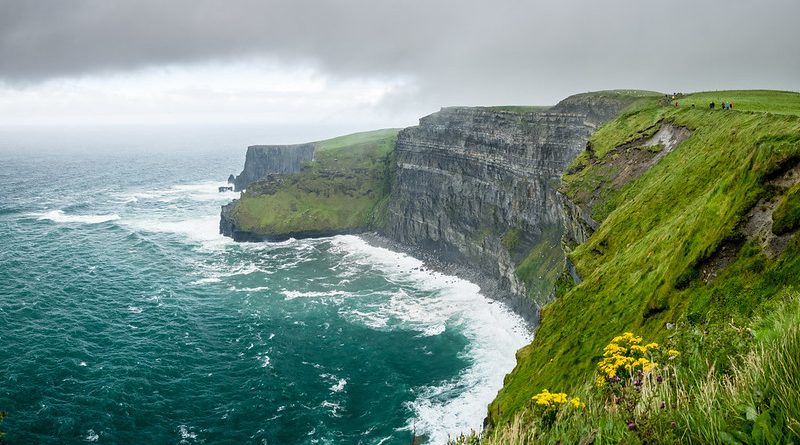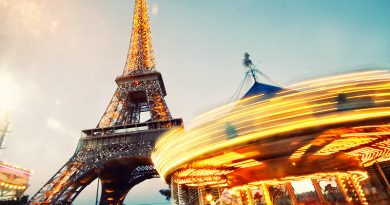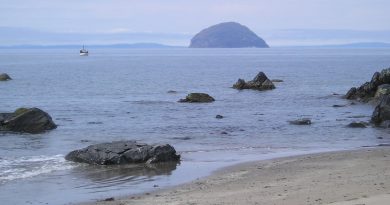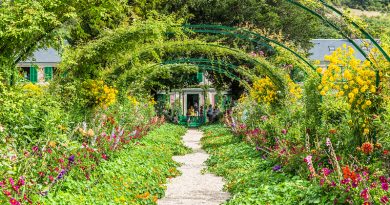Dublin City Guide
Situated on the East Coast of Ireland, Dublin’s roots run deep into the country and infiltrate much of history. Ireland’s official millennium was celebrated in 1988, yet it is generally agreed that settlers inhabited the area before 1088. The city was named Dublin – or “dubh linn” – after the “black pool” located where the River Poddle joined the Liffey.
Dublin has seen its fair share of highs and lows over the centuries. Today it boasts a population of over one million and counting, and is currently experiencing the full effects of the ‘Celtic Tiger’ phenomenon – the name given to the economic boom that hit Ireland in the 1990s.
A great deal of foreign interest, investment and migration has been encouraged into the country, such as has not been seen in years.
Today, Dublin is one of the top tourist destinations in Europe. Ancient buildings and monuments are restored and successfully marketed as historically significant tourist attractions. It’s a time of great change – except for the traditional Irish welcome, which remains as warm as ever!
English is the main language, with about 5% of Ireland’s population also speaking Irish, or Gaelige, as it is known locally – although you are unlikely to meet any Irish folks in Dublin who don’t speak English as their first language.
Local currency is the Euro.
Dublin’s climate is mild and temperate. Winter temperatures stay relatively constant around 30F, although be warned – the wide city streets accentuate the effects of some very cold strong winds! Summer temperatures are pleasant in the 60Fs, but bring with increased numbers of tourists and higher prices to the city.
St Patrick’s Day on 17th March is always a popular time to visit. Celebrating the life of the patron saint of Ireland, St Paddy’s Day is a major festival for both the city and the country as a whole, and is an excellent excuse for a Guinness-fuelled party! Make your bookings well in advance if you’re planning a trip at this time, but don’t worry about the city being over-crowded as you’ll be having such a great time, you won’t even notice!
Getting there
Six miles north of the city centre lies Dublin Airport, the principal Irish international airport. The national airline Aer Lingus with its distinctive green shamrock logo has flights from here to all over the world, as do many other major airlines.
Ferry services also run to Dublin. Dublin Port and Dub Laoghaire both have links to Liverpool, Holyhead and the Isle of Man through Irish Ferries, P & O Ferries and Stena Line services. The SeaCat provides an extra-fast service to Liverpool and the Isle of Man outside the winter months. Both ports have good public transport links into Dublin City.
Getting around
Dublin’s city centre is both compact and attractive, therefore the best way to get around is to walk. Wide streets and clearly identifiable landmarks means it’s hard to get lost – if in doubt find the Liffey, which neatly divides the city into north and south districts. The Grand Canal in the south and Royal Canal in the north are also excellent orienteering points, forming semi-circular arcs around the city centre. Local bus services run all across the city – but you will need the exact fare. Alternatively, take a tour bus that you can get on and off at your leisure at all the major tourist spots throughout the day.
Various companies offer guided walking tours with themes from Viking history to Irish folk music. Guided pub-crawls are prolific and popular, and there is even a James Joyce tour, which takes in spots made famous by their inclusion in the literary works of this Irish writer. Fans of Joyce should visit the city on Bloomsday, the 16th June, a day dedicated to the celebration of the author, chosen because the events of his greatest work Ulysses all took place on this day.
U2 fans should at least take a peek at the Clarence Hotel on Wellington Street, which is owned by the band. If you can’t afford the pricey rooms, you could always console yourself by splashing out on an expensive cocktail in the Octagon bar!
Major sights in the city:
Trinity College
Founded in 1592 by Elizabeth I, entrance to this college was restricted to those of the Protestant faith until 1793. Even after this date the Catholic Church forbade entrance to all good Catholics, with the restriction only being wholly lifted in 1970!
Now the proud head of Irish academia for all faiths, Trinity College has a reputation for academic excellence in beautiful surroundings. Its splendid architecture – spanning three centuries – cobbled squares and restful grassy areas provide a peaceful retreat for visitors and residents alike. Walking tours guided by students are available for guests.
Cathedrals
St Patrick’s Cathedral is Ireland’s largest religious building, situated on Patrick Street. Established in 1171 on the oldest Christian site in Dublin, it was fully restored to its present day status by the Guinness family at the end of the 19th century.
Down the road is Christ Church Cathedral, the oldest building in Dublin. Originally founded in 1038 by the Norse king of Dublin, the crypt has been used over the years not only as a place of worship, but also as a market, a business meeting place and even a pub! It is now home to the Treasures of Christ exhibition.
Dvblinia
Next to Christchurch Cathedral, this medieval heritage centre offers life size reconstructions of times gone by, a range of Viking artefacts and an excellent view from the 17th century tower.
Temple Bar
Formerly a rather run down area of Dublin, this district along the south side of the Liffey has recently blossomed into the city’s new cultural quarter. Trendy cafes, restaurants, bars, clubs and pubs feature aplenty, as do shops, galleries, hostels and guesthouses. Popular with locals and tourists alike, for many Temple Bar IS Dublin!
Phoenix Park
Dubliners pride themselves on being unpredictable, and indeed few tourists would expect to find 700 hectares of parkland in the middle of a city! Boasting beautiful lakes and gardens, sports pitches, the 17th century Ashtown Castle and the recently much improved Dublin Zoo, Phoenix Park has enough entertainment, history and tranquillity to fill a weekend of wandering. It is infamous for being the site of the murder of Lord Cavendish, British chief secretary for Ireland, by Irish nationalist group The Invincibles in 1882. Aras an Uachtarian is also situated here – the official residence of the Irish president.
Dublin Castle
The seat of English rule for seven centuries, Dublin Castle is full of history. Built by the British in the 13th century, it sits on Cork Hill next to Temple Bar.
GPO
It might seem a strange attraction to visit a post office, but this building was the central site of the famous Easter Uprising. Pictures of the protagonists are mounted on the walls, along with a historical account of the events that took place here in 1916.
The Guinness Storehouse
Adjacent to the Guinness Brewery at St James Gate, this is the perfect place to sample a pint of ‘the black stuff’. A self-guided tour unfortunately does not take in the brewery itself, but does introduce visitors to the story behind the conception, manufacturing and advertising of this famous ‘porter’.
The tour ends in the bar at the top of the building with a complimentary pint of Guinness supped whilst looking over the city – a fantastic view on a clear day. This is a hugely popular attraction for all visitors to the city, so if you want to avoid queuing book your tickets in advance.
The Viking Adventure
This venue on Essex Street in Temple Bar houses a large array of Viking artefacts excavated from the area west of Temple Bar. The ‘adventure’ is an exceptional interactive experience that recreates life in the narrow streets of Viking ‘Dyflin’ 1,000 years ago.
Shopping
Whether it’s designer clothes, handmade goods or some good old tacky souvenirs you’re after, you’ll find it in on the streets of Dublin. Grafton Street is perhaps the most upmarket shopping area, featuring shops such as Brown Thomas, the large designer department store; Weirs, an exclusive jewellers, and the most popular of Bewley’s Cafes. High street clothes stores congregate here and there’s a Marks and Spencers with a delightful old-fashioned style frontage.
Nearby Castlemarket is cool, trendy and relatively quiet, featuring high fashion clothes and footwear shops alongside various cafes. Cooke’s café is situated here – one of Dublin’s most renowned restaurants. Towards the Liffey, Temple Bar hosts some excellent little shops with all sorts of interesting artefacts and gifts. On Saturdays a book fair and food market also takes place here and great bargains can be had, despite the tourist influx.
North of the Liffey lies Henry Street, home to Arnotts department store, many popular and relatively cheap clothing and footwear stores, and the ILAC and Jervis Street shopping centres. Nearby Moore Street has a famous outdoor food market well worth browsing for its colourful stalls and lively atmosphere.
Nassau Street along the south end of Trinity College is the place to go for traditional Irish brands of woollens, tweeds, ceramics, glassware and other goods – sometimes quite pricey, but authentic. Slightly cheaper goods can be found in the food, craft and gift shops along Camden Street, where a daily outdoor food market is held.
Eating out
Traditional Irish cooking has strong roots in Dublin, but is fast being overshadowed by the influx of other world cuisine’s. Indonesian, Thai, Italian and Spanish restaurants have sprung up all over the city, including the small but excellent Il Primo on Montague Street, Salamanca Tapas Bar on St Andrews Street and the basic but deservedly popular Bangkok Café on Parnell Street. Temple Bar hosts a number of trendy cafes serving both tasty snacks and full meals, or for something special Thorntons on Portobello Road is a Michelin starred restaurant overlooking the Grand Canal, serving superb, expensive food by Dublin’s top chef Kevin Thornton.
It is, however, worth seeking out the hearty, pure flavours of traditional Irish food. Bewley’s Café on Grafton Street is THE place for a traditional full Irish breakfast – eggs, pork sausages, bacon, black and white pudding, tomatoes, potato cakes, toast and plenty of coffee or tea to wash it down.
Gallagher’s Boxty House has successfully marketed Irish cuisine to tourists, producing excellent food at moderate prices. Dishes include cabbage and salted bacon, Irish stew, oysters, beef stewed in Guinness, delicate Irish soda bread and, of course ‘boxtys’ – potato pancakes. Try ‘coddle’, a filling Dublin dish of boiled potatoes and pork sausages, to keep yourself well fuelled for an afternoon’s sightseeing!
Nightlife
Dublin is a vivacious city, and no more so than at night when the drink is flowing! Pubs and bars abound throughout the city, from the trendy to the traditional. A safe bet for many is The Temple Bar in the heart of the popular district – always lively, always full and always good fun.
The oldest pub in Dublin is the Brazen Head on Lower Bridge Street. Featuring live music every night, the atmosphere is vibrant and the staff friendly. Watch out for the low ceilings!
Ireland’s first microbrewery is the Porterhouse, whose own brews include the famous Oyster Stout, made using real oysters. Good food is served in a warm interior that shows glimpses of the brewing process.
Another pub popular with tourists is McDaids on Harry Street, a famous literary pub. Once the city morgue, the building was later converted to a chapel, hence the Gothic style interior. Jazz and blues music is popular here.
After pub closing hours there are plenty of clubs and late bars to choose from. The famous POD club in the stone vaults of the old Harcourt Street railway station is a popular swanky venue with a huge dance floor area and massive sound system pumping out the tunes. The Turk’s Head Chop House on Parliament Street is a good laugh, popular with tourists and locals alike. Labelled a ‘superpub’ it has a huge interior split into two (there is a second entrance called the Turks Head 2) with a lively atmosphere, a mainstream downstairs dance floor and a late bar every night.
For bars, the Modern Green Bar on Wexford Street is both relaxed and trendy with comfy seating, a good bar menu and laid back funky music. Owned by lead singer from the Fun Lovin Criminals, Voodoo is another trendy but easygoing bar with a New York vibe, situated out on Aran Quay.
Once you’re done drinking, for the 2am snack monsters among you there are plenty of places that offer takeaway or sit in meal options. Chunky burgers are available at Ricks on Dame Street, or visit Ali Babas on Parliament Street for some Lebanese kebabs.
Dublin has an excellent comedy circuit featuring local and international talent. Popular venues include the Comedy Cellar in the International Bar and The Olympia on Dame Street – check with your accommodation or local event guides for upcoming events. Dublin’s free Event Guide is available both online and in print form throughout the city – try accommodation, tourist office or newsagents for this weekly guide to entertainment in the city.
Finally, a word of warning – if you’re staying out of town and planning a late night it might be wise to book your return travel in advance, as demand far exceeds the supply of taxis late at night.
Sports
If dramatic sporting events are your thing, visit Dublin in September when the all-Ireland finals of hurling and Gaelic football take place. Both are traditional Gaelic sports, hurling is a type of aerial hockey where the stick can be raised above your head, and Gaelic football is a mix between rugby and football, similar to Aussie Rules but with a football rather than a rugby shaped ball. Games are generally very exciting to watch, with rough unprotected action, passionate players and rowdy supporters demonstrating pride in the game’s heritage almost as much as the game itself.
Useful links
Dublin Tourism – www.visitdublin.com – The official visitors’ website for Dublin, offering information on the tourist hot spots and online accommodation and car hire booking services.
Department of Foreign Affairs – http://www.irlgov.ie/iveagh/services – The official website for the Irish Department of Foreign Affairs, which includes up to date information about visa requirements.
Hotel Ireland – www.hotel-ireland.com – An online reservation service for a number of hotels in Dublin and throughout Ireland, including Bridge House guesthouse in Temple Bar.
Avalon House – www.avalon-house.ie – The website for this backpacker budget accommodation in Dublin. Bookings are available online.
The Guinness Storehouse – www.guinness-storehouse.com – Book your tickets online for self-guided tours of the birthplace of ‘the black stuff’.
Trinity College Visitors’ Site – http://www.tcd.ie/home/visitor/visitor.htm – The University website incorporates a comprehensive online visitors’ guide in its pages.
The Dublin City Tour – http://www.irishcitytours.com/dublin.html– Information on how and where to get on and off the bright red Dublin tour buses is all here.
SeaCat Service – www.steam-packet.com/seacat – Fares, schedules and bookings for the speedy SeaCat ferry service are available on this website.
The Event Guide – www.eventguide.ie – Dublin’s online guide to entertainment in the city that is also available as a weekly magazine.
The POD – www.pod.ie – The official website of Dublin’s huge city centre club, The POD.
Festival Ireland – www.festivalireland.com – Have a look on this site for the complete directory of Irish festivals – what they are and when they take place.
Dublin Pubs – www.dublinpubs.net – A comprehensive guide to the local pubs in Dublin.
Irish Comedy Club – www.dmcwebs.com/comedy/home.htm – The official website for The Comedy Cellar in the International Bar, including upcoming events and information on comedians.




